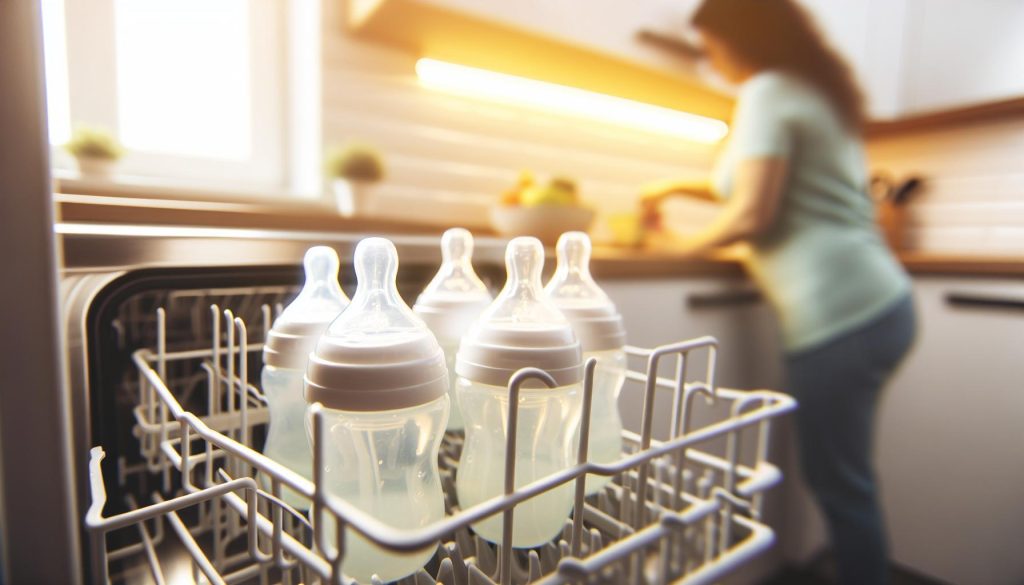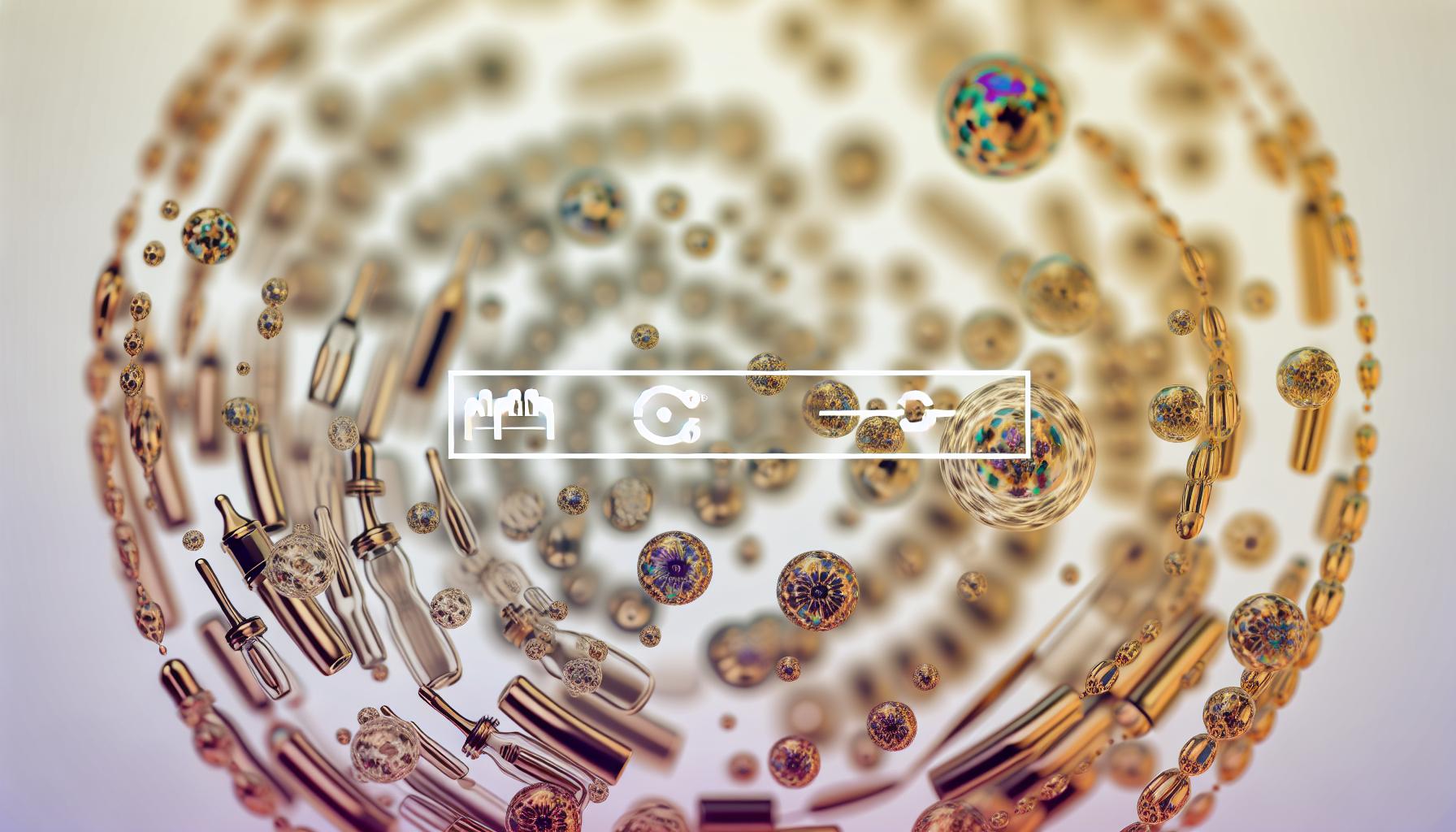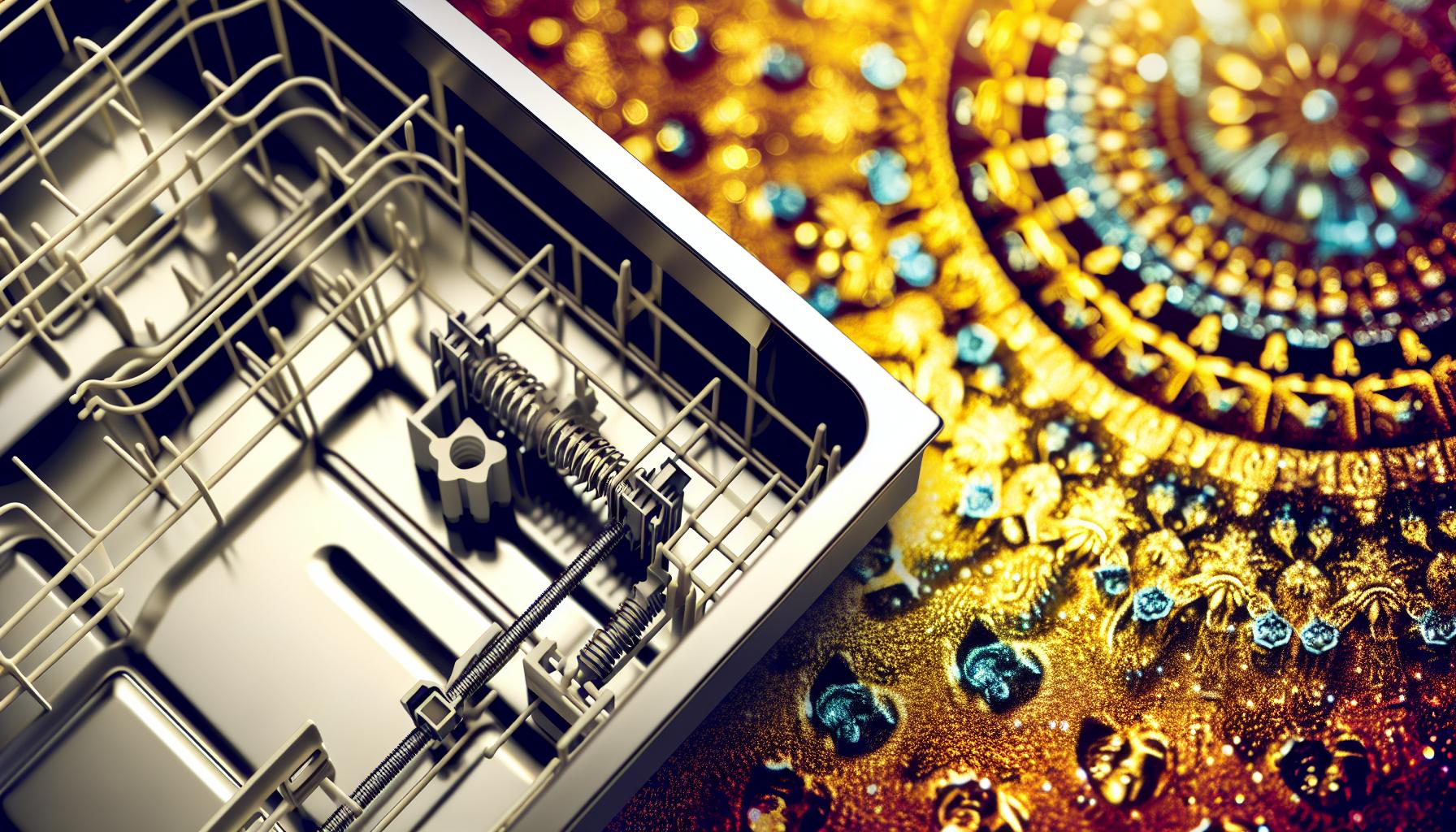As a new parent,ensuring your baby’s feeding items are clean and safe can feel overwhelming. you might wonder if tossing those baby bottles in teh dishwasher is an excellent idea. This guide clarifies the dishwasher’s role in maintaining hygiene for your infant’s feeding essentials,helping you make informed decisions for your little one’s health.
Understanding the Safety of Dishwashing Baby Bottles
When it comes to caring for your baby’s feeding essentials, hygiene is paramount. A common question many parents have is whether they can wash baby bottles in the dishwasher without jeopardizing their safety. The good news is that most modern baby bottles are designed to be dishwasher safe, making it easier for busy parents to maintain cleanliness. Though, it’s vital to follow specific guidelines to ensure that your bottles remain intact and free from harmful bacteria.
To maximize safety when washing baby bottles in the dishwasher, consider the following steps:
- Check Manufacturer’s Instructions: Always refer to the manufacturer’s guide to confirm if the bottles are dishwasher safe. Brands like Boon Nursh, Phillips Avent, and Chicco Duo are known for their dishwasher compatibility [[1]](https://www.reddit.com/r/BabyBumps/comments/10kzb27/are_there_no_dishwasher_safe_bottles/).
- Use the Top Rack: most bottles are recommended for the top rack only to avoid direct exposure to high heat, which can warp or damage them [[3]](https://www.evenflofeeding.com/products/classic-baby-bottles-glass?srsltid=AfmBOoq5rZDjFJ8ue00xiTw7fHbaTLFIOL5umFVwje6uYAf2I6HQECH0).
- Disassemble the Bottles: Before placing them in the dishwasher, disassemble all parts, including nipples and seals, to ensure a comprehensive wash.
- Choose the Right Cycle: Opt for a high-temperature wash cycle if your dishwasher has this feature, as it can help kill bacteria more effectively.
While it’s safe to wash baby bottles in the dishwasher, it’s crucial to conduct a visual inspection after washing. Look for any signs of damage or wear, such as cracks or discoloration, which could compromise the bottle’s integrity. For added peace of mind, consider sanitizing the bottles periodically using a steam sterilizer or boiling them in water for a few minutes.
incorporating these practices not only ensures your baby’s feeding gear remains clean and safe but also streamlines your bottle-cleaning routine—an invaluable benefit for busy parents navigating the joys and challenges of child-rearing. By understanding the safety measures for dishwashing baby bottles as outlined in “Can You Wash Baby Bottles in the Dishwasher? A Parent’s Guide,” you can embrace a more efficient approach to keeping your baby’s feeding essentials pristine.
The Right Way to Prepare Baby Bottles for the Dishwasher
Preparing Baby Bottles for the Dishwasher
Washing baby bottles in the dishwasher can be a time-saver for busy parents, but it’s essential to prepare them correctly to ensure they’re sanitized effectively. Proper preparation not only helps maintain the integrity of the bottles but also maximizes cleanliness. Here are some key steps to take before loading those bottles into your dishwasher:
- Check Dishwasher Safety: Always verify that your bottles are labeled as dishwasher safe. Materials like polypropylene and polycarbonate are generally safe, but some bottles might potentially be made from materials that can warp or degrade in high heat.
- Disassemble the Bottles: Fully detach all components of the bottles, such as nipples, rings, and valves. This ensures that every part gets thoroughly cleaned and that no residue is trapped in hard-to-reach areas.
- Use a Closed-Top Basket: For small parts, place them in a closed-top basket or mesh laundry bag. this prevents them from moving around in the dishwasher and possibly getting lost or damaged.
Additional Tips for Optimal Cleaning
To ensure your bottles come out sparkling clean, consider the following additional tips:
- Load with Care: Avoid overcrowding the dishwasher. Give the bottles and their parts enough space for water and detergent to circulate freely,enhancing the cleaning process.
- Use the Right Cycle: Select a dishwasher cycle that includes a sanitizing option if available. This is particularly important for baby items,as it helps eliminate harmful bacteria.
- Avoid Mixing with Dishes: Even though it might be tempting, it’s best not to wash baby bottles with regular dishes. Sponges and food residues can contaminate the bottles.
following these steps will help you effectively clean and care for your baby’s feeding items while utilizing the dishwasher’s efficiency. When done right, you can confidently ask, ”Can you wash baby bottles in the dishwasher?” knowing the answer is a resounding yes.
Sanitizing vs. Cleaning: What Every Parent Should Know
the Crucial Difference Between Sanitizing and Cleaning
Understanding the distinction between cleaning and sanitizing is vital, especially for parents concerned about their child’s health.While both processes aim to create a safe environment, their methods and effectiveness differ significantly. Cleaning refers to the physical removal of dirt, dust, and germs from surfaces. It is the first step in any hygiene routine and is necessary before applying sanitizing agents. When it comes to items like baby bottles, thorough cleaning helps to eliminate milk residue and visible dirt, making the subsequent sanitizing step more effective.
Conversely, sanitizing goes a step further. It involves reducing the number of germs on a surface to a safe level, as measured by public health standards. This is frequently enough achieved using chemical solutions or specific settings in dishwashers designed for sanitizing. For example, the question “can you wash baby bottles in the dishwasher?” hinges on understanding that while most dishwashers clean effectively, not all can properly sanitize unless they have a designated cycle that raises water temperatures to the recommended levels or employs sanitizing cleansers.
Steps for Effective Cleaning and Sanitizing of Baby Bottles
To ensure a clean and safe environment for your little one, follow these actionable steps:
- Clean: Start by rinsing bottles and nipples instantly after use to prevent residue from drying. Use hot, soapy water and a bottle brush to scrub every part.
- rinse: Thoroughly rinse the bottles and accessories with clean water to eliminate soap residue, which can be harmful.
- Sanitize: If the dishwasher has a sanitizing cycle, place clean bottles on the top rack or use a sterilizer. If hand sanitizing, soak the items in a solution of 1 tablespoon of unscented liquid chlorine bleach per gallon of water for at least two minutes, then let air dry.
By diligently following these steps, parents can ensure that their baby’s feeding accessories are not only clean but also sanitary, significantly reducing the risk of illness. Balancing both cleaning and sanitizing is essential, especially when considering the health of infants who are more vulnerable to germs. Thus, when pondering “Can you wash baby bottles in the dishwasher?” it is crucial to ensure that the chosen method of cleaning is both thorough and effective in sanitizing.
Choosing the Best Dishwasher Settings for Baby Items
Finding the Right dishwasher settings for Baby Items
As a parent, maintaining hygiene for your baby’s feeding items is paramount, and the dishwasher can be a powerful ally in this task. However, not all dishwasher cycles are created equal, especially when it comes to cleaning delicate baby bottles. To ensure effective cleaning and sanitization, it’s critical to choose the right settings.
1. Check for Dishwasher safety
Before you load your baby bottles into the dishwasher, first confirm that they are labeled dishwasher safe. Some materials,particularly certain plastics,can warp or degrade under high heat. Once confirmed, select a suitable rack to keep them secure during the wash cycle. Generally, placing bottles on the top rack is advisable to avoid exposure to the heating element, which is often located on the bottom of the dishwasher.2. Use the Sanitize Cycle
many modern dishwashers come equipped with a sanitizing cycle designed to eliminate 99.9% of bacteria. This feature is particularly beneficial for baby items. If your dishwasher has this option,make it your go-to setting. For optimal results, you can also elevate the wash temperature to 155°F (68°C)—this ensures that any leftover milk residue is thoroughly cleaned and disinfected[2](https://www.mrappliance.com/blog/2022/february/swift-guide-to-dishwasher-safe-water-bottles/).
3. Secure Your Bottles and Accessories
When washing baby bottles and accessories like nipples and caps, ensure that they are securely placed within the dishwasher. Use the dishwasher’s designated bottle holder if available,or place them upside down in the top rack to prevent water pooling inside.This helps ensure proper cleaning and reduces the risk of breakage during the cycle.
4. Rinse Before Washing
To maximize cleaning efficiency, quickly rinse bottles and nipples with warm water before placing them in the dishwasher. This practice helps remove milk residue and prevents it from hardening, leading to a more effective wash cycle.
| Dishwasher Setting | Recommended For |
|---|---|
| Normal Wash | General cleaning of baby items |
| Sanitize Cycle | thorough cleaning and disinfection |
| Quick Wash | Light soiling or when in a hurry |
| Air-Dry | Best for bacteria prevention after washing |
Ultimately, making informed choices about your dishwasher settings is essential when considering the question, “Can you wash baby bottles in the dishwasher?” Ensuring that your baby’s feeding items are not only clean but also safe can give you peace of mind in those hectic parenting moments.
Common Mistakes to Avoid When Washing Bottles
cleaning baby bottles can frequently enough feel like a daunting task,especially for new parents. Though, being aware of common mistakes can simplify the process and ensure that your baby’s feeding gear is properly sanitized. Here are some critical pitfalls to watch out for when washing bottles, whether by hand or using a dishwasher.
- Skipping Disassembly: One of the most notable errors is failing to fully disassemble the bottles before washing. Components like nipples, valves, and lids can trap milk residue and bacteria if not thoroughly cleaned. Always take the time to break down each part for an effective clean.
- Neglecting Immediate Rinsing: allowing milk residue to dry can make it harder to remove later. Ideally, rinse out the bottle and its parts immediately after use. This simple step can prevent odors and stubborn stains from setting in, making your cleaning efforts more manageable.
- Incorrect Dishwashing Cycle: If you choose to wash baby bottles in the dishwasher, using the wrong cycle can lead to unsatisfactory cleaning. It’s essential to place bottles on the top rack and select a sanitize option if available. Avoid using harsh detergents, as these can leave harmful residues.
- Forgetting to Sterilize: While regular cleaning is crucial, sterilizing bottles after the first use or when transitioning from breast to bottle can definitely help eliminate germs. follow guidelines to stay on the safe side, ensuring you either boil the bottles or use a suitable sterilization device.
By avoiding these common mistakes, you can streamline the process of washing baby bottles, ensuring they are safe and clean for your little one. Adhering to proper cleaning techniques not only safeguards your baby’s health but also saves time and effort during your daily routine. Remember,proper cleaning is key to ensuring your feeding routine goes as smoothly as possible while exploring the question of “Can You Wash Baby Bottles in the Dishwasher? A Parent’s Guide.”
tips for Caring for Baby Bottles Beyond the Dishwasher
Understanding the Importance of Proper Care for Baby Bottles
Ensuring that your baby bottles are not only clean but also well-maintained is crucial for the health and safety of your little one. While many parents wonder, “Can You Wash Baby Bottles in the Dishwasher?” and resort to this convenient method, there are additional steps you should take to ensure the longevity of your bottles and the well-being of your baby. Regular hand washing is frequently enough recommended, especially for parts like nipples and valves, which can wear out in the dishwasher’s high heat.
Effective Cleaning Techniques
After a thorough washing in the dishwasher, consider implementing these additional care practices:
- Inspect Before Use: Always check for cracks or signs of wear on your bottles. Even minor imperfections can harbor bacteria or pose a choking hazard.
- Regular Disinfection: Soak bottles and their parts in a solution of water and white vinegar or mild bleach once a week to ensure they’re thoroughly disinfected. Rinse well after soaking.
- Allow to Air Dry: After cleaning, place bottles upside down on a drying rack. This prevents moisture from pooling at the bottom, which can promote mold growth.
Storing Bottles properly
Where and how you store your baby bottles can also impact their cleanliness and safety. Consider the following tips:
- Use a Designated Shelf: Keep baby bottles on a seperate shelf to avoid contamination from other kitchen items.
- Avoiding Complicated Storage: stack only compatible bottles that can withstand the same conditions without risking warping or damage.
Understanding Material Compatibility
Different materials react differently to cleaning methods. Here’s a brief overview of common baby bottle materials and their care instructions:
| material | Dishwasher Safe? | Special Instructions |
|---|---|---|
| Plastic | Yes, but check for BPA-free | Avoid high heat settings |
| Glass | Yes | Handle with care to avoid breakage |
| stainless Steel | Usually safe | Check manufacturer guidelines |
By following these tips for caring for your baby bottles beyond the dishwasher, you can maintain a safe and hygienic feeding environment for your little one, ensuring that your bottles last longer and are free from harmful residues.
Expert Recommendations on Bottle Material and Dishwasher Safety
Understanding Safe Bottle Materials for Dishwasher Use
When it comes to ensuring the safety and cleanliness of baby bottles, the material plays a crucial role in determining whether they are dishwasher safe. Generally, bottles made from polypropylene (PP), polyethylene (PE), and silicone materials are considered safe for use in dishwashers. These materials can withstand the high temperatures of a dishwasher without warping or releasing harmful substances,making them ideal choices for busy parents.However,it’s essential to check for any symbols or labels that indicate dishwasher safety,as not all bottles are created equal.
Best Practices for Dishwasher Use
To maximize effectiveness and maintain the integrity of your bottles, follow these best practices when washing baby bottles in the dishwasher:
- Secure Components: Place bottles and their parts securely in the top rack of your dishwasher. This position is typically farthest from the heating elements, reducing the risk of damage.
- Disassemble Before Washing: Remove all components, including nipples and lids, to ensure a thorough clean. Smaller parts can be placed in a designated utensil basket to prevent them from getting lost or damaged.
- Avoid High-Heat Settings: Even though many bottles can endure high temperatures, using a normal wash cycle without extra heat can definitely help prolong their lifespan.
Additional Recommendations and Considerations
For items that are not dishwasher safe, hand-washing with hot, soapy water is the preferred method. The CDC recommends that after cleaning,air-dry the bottles in a clean area. It’s more hygienic to avoid drying racks, as they can harbor germs and may not allow for sufficient airflow around the bottles [2[2[2[2].Always ensure that baby feeding items are stored in clean cabinets to prevent contamination [2[2[2[2].
while many parents find dishwashers a convenient tool for cleaning baby bottles, adherence to safety guidelines and best practices is key to ensuring your child’s feeding items remain hygienic and safe. For a detailed exploration, consult resources that discuss washing baby bottles in dishwashers to make informed decisions that align with your parenting style and lifestyle.
When Hand Washing Might Be the Better Option
Consider Hand Washing for Better Hygiene
While many parents find the convenience of washing baby bottles in the dishwasher appealing, there are compelling reasons to opt for hand washing rather. One significant benefit of hand washing is the ability to ensure each bottle component is thoroughly cleaned and rinsed. When using a dishwasher, it’s not uncommon for certain items to be placed incorrectly, leading to exposure to residues or improper cleaning. Hand washing allows you to give each bottle and its parts the individual attention they require, ensuring that no milk residue remains that could foster bacterial growth.
- Attention to Detail: Hand washing enables you to inspect each piece for any lingering milk or debris that a dishwasher might miss.
- Controlled Environment: When washing by hand, you can use hot, soapy water with a designated bottle brush to scrub each component effectively, which is essential for infant feeding items.
- Flexible Timing: Parents can hand wash bottles anytime, which is especially helpful during busy schedules when dishwashers may not be available.
Ideal for Non-Dishwasher-Safe Items
Certain bottles may not be suitable for dishwasher use, especially those made from delicate materials or with intricate designs. in such cases, hand washing becomes essential to prevent damage and ensure longevity. Additionally, some feeding accessories, like nipples and collars, are frequently enough too small for dishwasher baskets and can easily become lost or damaged. Hand washing provides a safe approach to keeping these critically important feeding items in optimal condition.
Healthier Drying Practices
An frequently enough-overlooked aspect of washing baby bottles is the drying process. Air-drying bottles on a clean dish towel or paper towel is more hygienic than using a drying rack,which can harbor germs. Air-drying on clean surfaces helps prevent contact with any residual bacteria that might be present in a drying rack. this careful attention to all stages of cleaning promotes better health for your infant and contributes to a safe feeding environment.
By choosing to hand wash baby bottles, parents can exercise greater control over the cleaning process, ensuring that each part is sanitized properly and maintaining a higher standard of hygiene.
Faq
Can You Wash Baby Bottles in the Dishwasher? A Parent’s Guide
Yes,you can wash many baby bottles in the dishwasher,but it’s essential to check if they are labeled as dishwasher-safe. Use the top rack for best results and follow your manufacturer’s instructions.
Many modern baby bottles are designed to withstand the dishwasher’s heat. Ensure the bottles are securely placed to avoid breakage or displacement during the wash cycle. For more on safe practices, consider visiting Cascade’s guide.
What is the best way to wash baby bottles in the dishwasher?
the best way to wash baby bottles in the dishwasher is by placing them on the top rack and using a gentle cycle.Additionally,ensure that all pieces are separated,including nipples and rings.
By ensuring that each part of the bottle is individual and secure, you can minimize the chances of any damage. It’s also wise to use a mild detergent to protect the materials. Remember to do a thorough rinse after washing.
Can I wash baby bottles with other dishes?
It’s generally not advisable to wash baby bottles with other dishes. Washing them separately helps prevent exposure to food residue and ensures they are thoroughly sanitized.
While it might seem convenient, doing so could compromise the cleanliness of the bottles, especially if they are made from more delicate materials. Keeping baby items separate also helps in maintaining hygiene, which is crucial for babies.
Why does washing baby bottles in the dishwasher matter?
Washing baby bottles in the dishwasher is essential for ensuring they are properly sanitized and free from bacteria. The high temperatures involved in the wash cycle help eliminate germs.
A clean bottle is vital for your baby’s health. Using the dishwasher can save time and ensure thorough cleaning, especially if you have multiple bottles to wash regularly. This method also reduces the risk of harmful residues.
How often should I wash baby bottles in the dishwasher?
Baby bottles should be washed after each use to ensure they stay clean and free of harmful bacteria. If you’re using a dishwasher, running a load every day or every other day can definitely help.
Consistency in washing is crucial, especially in the early months when your baby’s immune system is still developing. Regular sanitization not only protects their health but also gives parents peace of mind.
What materials are safe for dishwasher washing baby bottles?
Most baby bottles are made from materials like polycarbonate, polypropylene, or silicone, which are generally safe for dishwasher washing.Always check for the dishwasher-safe label.
Some bottles might potentially be constructed from glass, which is also dishwasher safe, but care should be taken to avoid breakage. Additionally,you should avoid placing items not intended for high temperatures in the dishwasher.
Should I hand wash baby bottle nipples?
Yes,it’s a good idea to hand wash baby bottle nipples to ensure they are thoroughly cleaned and sanitized. While some can be placed in the dishwasher, hand washing allows for more careful attention.
Using warm, soapy water and a soft brush can effectively clean the nipples and help maintain their quality over time. Always follow the manufacturer’s guidelines for care to prolong their lifespan.
concluding Remarks
washing baby bottles in the dishwasher can be a convenient option for many parents, but it’s essential to take specific precautions to ensure safety and cleanliness. Always check if your bottles are labeled dishwasher-safe and consider using the top rack for a gentler wash. Be mindful of the heat, as excessive temperatures can degrade certain materials over time. Maintaining a separate wash cycle for baby bottles can also help avoid cross-contamination with other dishes. By following these guidelines, you can streamline your cleaning process while keeping your little one’s feeding essentials safe and hygienic. For more tips and insights tailored to your parenting journey,we invite you to explore further resources and join our community of supportive parents dedicated to making those early years a little easier. Your commitment to your child’s health is commendable, and we’re here to assist you every step of the way!







